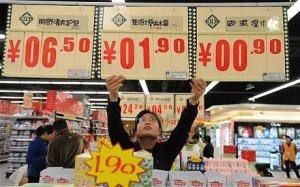 On a recent visit to China, the economy seemed to be saturated. Having had long discussions with analysts, scouring over reams of print material and listening to megabytes of podcasts on the state of the Chinese economy, I felt it for the first time.
On a recent visit to China, the economy seemed to be saturated. Having had long discussions with analysts, scouring over reams of print material and listening to megabytes of podcasts on the state of the Chinese economy, I felt it for the first time.
The brimming point and reality of the matter though sinks in when numbers are revealed – raw material costs are up, salaries are rising 22 percent and manufacturing is down in PMI numbers. Which means that its more expensive for factories to churn out fewer goods than before. Sure its a consequence of growth and development, a result of the years of hard work, policies and international arbitration China put in, but where does this leave the worlds second largest economy?
Beijing is trying to nudge the people and their economy towards creating higher value. While prices and costs are one way to automatically thrust value up, they also bridge the yawning economic gap by putting more money in the hands of people who are actually producing the goods. Its a tough balancing act, but Beijing seems to be mastering the act by now, although the economy has seen run away inflation, it continues to grow more prudently.
According to the Financial Times, the construction sector, a major source of steel demand, has slowed this year as Beijing has tried to cool real estate prices. Over the past year China has raised interest rates and bank reserve requirements in an effort to fight inflation, and these measures have restricted the flow of credit into the economy. As a consequence of slower infrastructure demand, Chinese steel mills have started to cut their production as tighter credit conditions and a cooling real estate market bite in the world’s biggest steel market, pushing the cost of iron ore to a 15-month low.
Furthermore, wages which have also increased, don’t yet seem to be in tandem with inflation which has seen soaring food prices, with many employees complaining that they cannot afford luxuries they used to earlier. Compared with developed markets, labour costs in China are still low. The highest minimum wage is in Shenzhen, an export hub next to Hong Kong, at Rmb1,320 (US$207) a month. In hourly terms, Beijing workers are the best paid, with the floor set at Rmb13 (US$2.05) an hour.
But compared with other emerging markets, China is quickly getting more expensive. The hefty increase in minimum wages this year comes on top of similar gains over the past two years.
The effects are beginning to show. China’s share of low-end manufacturing imports in the United States has peaked and is now declining, according to UBS. Cheaper countries in Asia, especially Vietnam and Bangladesh, have been the main beneficiaries, eating into China’s market share.
